
Remembering by Dismembering: Databases, Archiving, and the Recollection of Seventeenth-Century Broadside Ballads
Patricia Fumerton
Department
of English, University of California, Santa Barbara
Patricia Fumerton. "Remembering by Dismembering: Databases, Archiving, and the Recollection of Seventeenth-Century Broadside Ballads.". Early Modern Literary Studies 14.2/Special Issue 17 (September, 2008) 2.1-29 <URL: http://purl.oclc.org/emls/14-2/fumerrem.htm>.
- It is an accepted fact that major databases such as EEBO, ECCO, and EEBO-TCP
have opened up early modern scholarship. Despite their high subscription fee,
these digital archives allow many more scholars almost immediate access to facsimiles
and even transcriptions of rare texts that could formerly have been viewed only
via difficult-to-retrieve microfilm (itself costly) or through long and expensive
travel to visit “the real thing.” Nearly as important, because they offer free
access, are the online projects inspired by such databases, such as the Early Modern Center’s English Broadside Ballad Archive (EBBA) at UCSB and its first phase
of development, the Pepys Ballad Archive (to which we shall return). Expanded accessibility
to rare texts via such databases is, I reiterate, a recognized, undeniable
fact. But have digital archives done more than simply open the doors to early
modern scholarship? Have their modus operandi also changed the way we actually
perceive, understand, or “remember” the early modern past?
- In some ways, one might argue, such expansive databases don’t
reflect any dramatic change or new kind of thinking. There is nothing much new
in the drive to assemble different kinds of information on a grand scale. The digital
archiving that is now proceeding fast apace on a global basis expresses an age-old
“human obsession,” as Kevin Curran observes. Providing some historical
perspective, Curran points out that “The relentless endeavor to gather
information (on just about anything) and to store it, has been going on since
antiquity.”[1]
For Matthew Steggle collecting impulses have especially deep roots in the
history of early modern scholarship. Citing such huge projects as the cataloguing
work of the STC and Wing, among many other pre-digital compendiums of early
modern data, Steggle argues that “the digital ‘revolution’ is made possible by,
is shaped by, and must be considered in relation to the major scholarly projects
of the pre-digital age” at which early modernists excelled.[2]
- Still, one might argue in counter-response, something very new is
afoot via the workings of the web in the ways we collect and think about the
past. This is the position of Roger Chartier, who argues that what categorizes
the new is, in a word, fragmentation:
Reading in front of the computer screen is generally a discontinuous reading process that seeks, using keywords or thematic headings, the fragment that the reader wishes to find: an article in an electronic periodical, a passage in a book, or some information in a website. This is done without the identity or coherence of the entire text from which the fragment is extracted necessarily being known. In a certain sense, one might say that in the digital world all textual entities are like databases that offer fragments, the reading of which in no way implies a perception of the work or the body of works from which they come.[3]
In large part, I would agree with Chartier’s rendering of the web experience of accessing and reading texts. But along the lines of “continuum theories,” such as those proposed by Curran and Steggle, one might wonder: is the notion of a received fragmentariness really something radically new? Or could such fragmentariness, rupture, or what one might call the dismembering of digital delivery also characterize the methods of traditional scholarship of the early modern period and, perhaps even more fundamentally, the ways early modern contemporaries themselves thought about, produced, and experienced their print culture? The answer, I posit in this essay, is “yes.” In both the early modern period—in its experiencing of what one might call the “passing present”—and in the modern period as it re-collects early modern print culture—in its accessing of the “distant past”—there has always been an ongoing process of remembering by dismembering in which fragmentation plays a key role.
- Since
for Chartier the “rupture” created by the web comes largely from the missing
physical book (which in his rendering forms a kind of “whole” that can be held
in one’s hands and wholly contained with others of its ilk in physical libraries),
we might begin our investigation one step in advance of the act of actually reading
texts by thinking about the process of finding them, then and now. Looking
back roughly to the pre-1990s, compare searching for texts via card catalogues in an
old-style research library, on the one hand, and via databases in modern cyberspace,
on the other. In some ways, there was more predictability and
“wholeness’ to the former process. One necessarily proceeded via stable subject
categories (prescribed by the Library of Congress), or by author or title, and
when one searched by subject, the title card would be embedded alphabetically
amidst a multitude of other cards on the same topic amongst which one might
further browse. In the subsequent “old-style” method of physically searching for
the actual book on the shelf, which continues today (though card catalogues
have mostly become things of the past), books are similarly gathered with many others
of like sort, allowing again for a kind of overview or “whole” vision.
- In the
searching of databases, however, the LOC subjects tend to be inconsistently
applied by the programmers or produce too huge a return, and one frequently
resorts to the option of querying by non-standardized keywords or phrases, which
can produce a helter-skelter array of “hits.” For example, a keyword search
for “blackamoor” in EEBO turns up a long and motley list of plays, romances,
sermons, ballads, pamphlets, etc., some of which contain casual metaphoric use
of the term, some of which represent actual blackamoors, and most of which
apparently have little to do with each other. The results of such a search in
our electronic age, especially for those of us who remember using the old card
catalogues, can indeed appear sometimes overwhelmingly fragmentary and
haphazard.
- But this is not to say that the “old style” of research was not also
prone to confusion (especially when one was unsure of the LOC subject category
or the exact title of a work) and—often more fortuitously—to accidental “hits.”
We sometimes forget how the haphazard was actually a key part of old-style
library research, both in searching through a card catalogue and in searching
through the physical shelves. Looking for a sonnet sequence for my first book
in the stacks of the University of Wisconsin-Madison, for instance, I remember
finding shelves of other sonnet sequences, but also, right below them, two
shelves of miscellanies (little books with small poems assembled in them much
like sonnet sequences). I ended up writing a chapter that addressed both kinds
of small books as linked cultural phenomena, a combined study that I might
never have imagined without being in the shelves and fortuitously seeing the
physical connections, and that I would unlikely have encountered via a database
search, unless I already knew of the link between the two literary forms.
- So in some ways, the new electronic database age is no different from
the old card catalogue and shelf-searching age. There has always been a
haphazard or accidental or partial way of accessing the extant repositories of
the early modern period. There has never been a system of accessing a “whole”
vision of the past, only dismembered or fragmented visions. Any apparently achieved whole story, as Frances E. Dolan observes in her essay forthcoming in Ballads and Broadsides in Britain, 1500-1800, is in fact a composite narrative constructed from historical fragments and, as such, is fictional: “a deceptively coherent tale.”[4] Even the LOC
subject categories only provide partial windows onto the total repository of
books, and function to separate out as much as to gather together books. The
difference between old and new is really more one of degree, due to the
magnitude of many databases’ holdings and the almost infinite partial
gatherings their searches make possible.
- But there are two additional—and both rather paradoxical—points that need to be stressed about the resulting intensified digital world view of early modern print culture:
- Take ballads
as an instance. If we focus for the moment on the receiving end of these
printed artifacts and songs, we find that viewers or listeners of ballads saw
or heard them depending on where they just happened to be walking or standing—the
book stall, the marketplace, the alehouse, the scaffold, etc. Different kinds
of ballads would certainly be peddled at those different places. Ballads
celebrating community and homosocial pleasures would be more saleable at the
alehouse, for example, whereas “good-night ballads” (in which a criminal being executed supposedly laments
his or her crime) were the favorites of scaffold scenes[5]. When such printed
fare was actually bought, furthermore, it was often bought by the bundle—for
example, “a groat’s worth of ballads” (a groat being four pence)—the purchaser not knowing exactly what might be
included in his or her retrieved “hit” or bunch of ballads[6]. When viewed or bought
individually, customers might focus on and make their choice based on the
ballad’s aesthetic look (attracted by its intriguing woodcuts and curling
black-letter print), or its catchy tune, or its promise of “news,” or some other
prominent feature. The resultant “collection” of heard, viewed, and/or read
ballads with which any contemporary might familiarize him- or herself could thus
be quite motley and quite haphazardly gathered.
- The occasional, hit-and-miss, and partial encounters of
contemporaries with ballads in early modern London and beyond was furthermore a
living out at a social level of the unpredictable and piecemeal practices by
which such cheap print was produced. As Adrian Johns has shown, in his
important The Nature of the Book, printing processes themselves
destabilized as much as fixed print. There were many cooks making the broth of
a book, pamphlet or broadside ballad—authors, printers, publishers,
compositors, proof-readers, piratical booksellers—and changes could be
introduced at every step in the production process, either deliberately or not.
In Johns’s words, “the processes leading to the deployment of a book and those
consequent upon its use both depend upon . . . many contingencies.”[7] Such was especially
the case of cheap broadsheets, pressed out in haste, corrected and altered on
the fly. Of course, Chartier, as an astute student of cheap print, knows full
well about the unstable and makeshift features of popular print, but in
describing the web versus the library, he seems for a moment to have forgotten
them. Contemporaries, especially accessing cheap print, would have been more
mindful of such slippery contingencies, because the physical products appearing
just about everywhere around them—such as the printed broadsheets of ballads—bore
the marks of fragmentariness. Like the unpredictable “hits” from a database
search, broadside ballads were constructed out of infinitely re-arrangeable
bits and pieces.
- Any one ballad by the same title, a contemporary would notice, might
be made up out of differently assembled and movable parts. A new issue of a ballad
might be arranged with a different text or a different tune or different
woodcuts—or all three at the same time. Consider, for example, the two ballads
about “Mock Beggar Hall” from the Roxburghe collection in the British Library (the
titles vary slightly: the full title to the earlier version is “The Map of
Mock-begger Hall, with his scituation in the spacious Countrey, called, Anywhere”;
the later version is “Mock-Beggers Hall, with his scituation in the spacious
Country, called, Any where”). Both ballads lament in their variations upon the
same theme the idea that the wealthy in the countryside have been lured by the
delights of London to sell off their lands, head for the city, and leave their
country estates empty—yet another illustration of the decline in hospitality
lamented throughout the seventeenth century. When the country estate stands
empty, the beggars normally relieved at its doors go empty-stomached, hence the
variation in the ballads upon the refrain “While mock beggar hall stands
empty.” The country estate becomes an empty hall (empty of its owners and of
its hospitality) which serves to mock beggars in need who come expectantly to
its doors.
- Both of the ballads about “Mock Beggar Hall” in the Roxburghe collection were published by Richard Harper, the first around 1633 (as I shall argue), soon after Harper attained freedom from his apprenticeship, and the second between 1639 and 1640 (Figures 1 and 2):
- Notice the difference at a glance between the two ballads, which a close-up of each ballad title, tune title, first woodcut, and first line clearly shows (Figures 3 and 4):
- Even the imprint for the two ballads changes, suggesting a shift in
the publisher’s place of sale or at least in its naming:

- If Richard Harper (probably with the help of his printer) has selectively
gathered and rearranged the fragments that make up his two ballads, he is not
alone. Printers and publishers of cheap print in the seventeenth century regularly
took (from themselves and from each other) the bits and pieces of the constituent
parts that made up individual ballads: woodcuts were bought up cheap or exchanged;
tunes were reissued, sometimes renamed; and stories were retold, sometimes
slightly altered, and called “new.” In a previous article, I have referred to such migratory
and patchwork printing practices as creating an “aesthetics of vagrancy”; in
like mind, Alexandra Franklin has dubbed them “an art of collage.” Based on her forthcoming essay in Ballads and Broadsides in Britain, Angela McShane might well rename that art “cobbling.”[10] Whatever one’s term of preference, it is important to recognize that such mobile patchwork is the very essence of early modern ballad print culture. Thus one should not be surprised to find that the second woodcut (the one on the right) of Harper’s earlier printing of the “Mock Beggar Hall” ballad (seen in Figure 1) had appeared
even earlier, around 1625, in a ballad now in the Pepys collection about a
sailor and his love which was printed for John Grismond (one of the original “ballad
partners” of 1624 who published between 1618 and 1638):
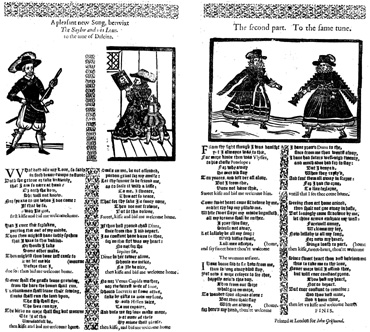
Figure 7: “A pleasant new Song, betwixt The Saylor and his Loue,” Pepys 1.422-423. By permission of the Pepys Library, Magdalene College, Cambridge - Then again the first woodcut to Harper’s initial issue of “Mock
Beggar Hall” (shown in close-up in Figure 3 above) had itself made a previous
appearance in a pamphlet (not a ballad) titled Holland’s Leaguer printed
by A. M. (most probably Augustine Mathewes) for Richard Barnes in 1632:
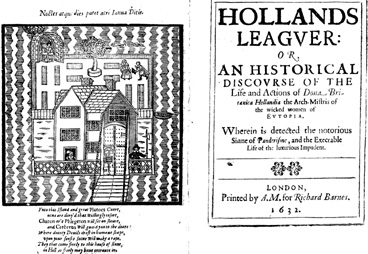
Figure 9: Nicholas Goodman, Hollands Leaguer (London, 1632)
(larger image)
The associational link via the shared woodcut to this pamphlet would perhaps be the greatest mockery of “Mock Beggar Hall” since Holland’s Leaguer was a famous London whorehouse, located in the bankside liberty of Paris Garden. The brothel originated as an aristocratic manor house, but by the 1630s it had become infamous as the brothel leased and managed by Elizabeth Holland. The house was all the news between January and May of 1632, during which time it was under siege by the authorities and tenaciously defended by its inhabitants. Feeding demand for accounts of the onslaught, no less than three texts—all titled “Holland's Leaguer”—were entered into the Stationers' Register during these months: a play by Shakerley Marmion, a ballad by Lawrence Price, and a pamphlet by Nicholas Goodman, for which the hall from our "Mock Beggar Hall" serves as the frontispiece. "Each of these texts," Natasha Korda notes, "is structured by a narrative of penetration that describes, with sexualized urgency, the storming of Holland's fortress-like brothel."[12] It is precisely such urgency that leads me to believe that Harper printed his first version of “Mock Beggar Hall” closer to 1633 (or at least on the early side of the 1634-37 dates the BBTI suggests for the ballad’s imprint), when Harper had just completed his apprenticeship and when, with everyone talking about the siege of Holland’s Leaguer, the re-used image would be especially eye-catching and marketable.
- Of course, whatever associational assemblages that an early modern
contemporary gathered as “hits” around “Mock Beggar Hall” would in part be determined
by which fragments of these various forms of cheap print caught his or her eye
or ear. Perhaps the tune? A contemporary might focus on the recurrent tunes
to the two Mock Beggar ballads, making the two an aural pair for him or her, when
all else looks at first glance entirely different (Figures 1 and 2):
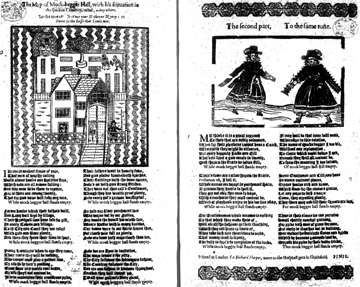
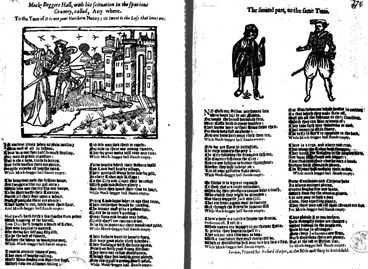
Or the intriguing woodcut of the mannish women? The recurring second woodcut to the first “Mock Beggar Hall” ballad might well create a mental grouping of that ballad with “The Sailor and his Love” and/or “The Country Lass” (Figures 1, 7, and 8):


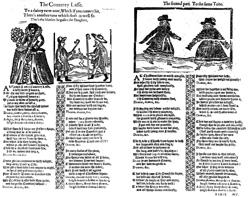
Or the infamous woodcut of the so-called “hall”? Focused on this recurring first woodcut of the earlier version of “Mock Beggar Hall,” a contemporary in the know would likely make a “hit” with the pamphlet, Holland’s Leaguer, about the siege by authorities of the London whorehouse (Figures 1 and 9):


- These
are, of course, just a few of the potential mental groupings a contemporary
might make. The possible configurations or gatherings of cheap print—the
“hits” a contemporary might come away with—are virtually endless, and always,
by virtue of that fact, fragmentary. Woodcuts, texts, and tunes were pulled
out, patched in, and peddled at the discretion or whim of authors, printers,
and publishers. And such fragments of print and song and image themselves created
fragmentary gatherings or partial “wholes” of assemblages in the minds of
contemporaries amidst the swirl of the estimated millions of broadsides and
pamphlets on the streets of London and ushered out into the countryside.[13] No contemporary could
have had a whole picture of street print, in part because the print form
itself was an assemblage of infinitely arrangeable bits and pieces.
- Recognition of the dismembering practices of contemporary printing
and reception of broadside ballads puts in context as more “normal” or
“representative” some of the apparent oddities practiced by the most prominent
collector of English seventeenth-century ballads and popular print, Samuel
Pepys. Pepys was without doubt an odd man, one who would write in cipher in
his diary about his many sexual dalliances, and who in some ways appeared compulsively
determined to resist the forces of dispersion and transmutation that characterized
the print culture of his age. Indeed, as Pepys witnessed the break-up of
contemporary libraries, such as that of John Selden, he fought to hold his own
library together, obsessing that his books be bound alike with his arms printed
on each copy, making “lifts” for books which resembled actual bindings so that
the texts would all look the same height, cataloguing and re-cataloguing his
collection, specifying in his will that his library should be “closed” by his
nephew John Jackson (who fittingly rounded it off in his calculation to exactly
3,000 volumes), specifying the exact place where the library should be housed
(Magdalene College or, failing that, Trinity College, in its own special room),
refusing any lending of the books from the library grounds, and limiting
visitors to no more than ten books at a time.[14] Such determination “to hold it together” won praise from Pepys’s friend and
fellow-collector, John Evelyn, who was keenly aware that dismemberment
threatened the collector at every turn: “you have declared,” he wrote to Pepys,
“that you will endeavor to secure what with so much cost and industry you have
collected, from the sad dispersions many noble libraries and cabinets have
suffered in these late times: one auction, I may call it diminution, of a day or
two, having scattered what has been gathering many years.”[15]
- As in his meticulous cataloguing of his books, a mini-database, so
to speak, Pepys’s collecting practices thus sought to resist fragmentation—the
fate of being “scattered”—and strove instead to create an integrated and
enduring “whole” of his library. But one cannot escape one’s cultural
formations, and Pepys’s very urge to wholeness itself caused dispersal.
Following the drive to collect by uniform size, for instance, Pepys separated
out books of like kind, even those of the same genre. He constantly shuffled
his books around in this cause, to the extent that in early arrangements of his
library, he actually divided up his six volume diary (1660-69), dispersing the
separate volumes to four separate parts of the library, because all but two
were different sizes.[16]
- With the ballads and prints he collected, Pepys was also determined to bring them into a single “whole” aesthetic vision but once again through a constant process of reshuffling. As he added to his collection, he repeatedly moved around the ballads, creating new groupings roughly by chronology and theme. Individual ballads and their album pages thus often sport multiple numbers, each number but the last (in red ink) indicating a different position the ballad had once assumed in a mini-assemblage that for a time made up Pepys’s stable and collective “whole,” before undergoing disassembly and reassembly.[17] Most strikingly, in addition to constantly rearranging his ballads, Pepys sought wholeness at the cost of fragmentation. He cut the ballads he collected down to a size that would fit in identical album sets. In doing so, he sometimes even cut off parts of a ballad’s text or ornament; for instance, 2.206, “The Last News from Frauce [France],” is missing the top of some of its title as well as the plume to the hat of the cavalry rider represented in the third woodcut. Pepys also typically segmented two-part ballads that had originally been printed on a single broadsheet, cutting the sheet into two pieces that would neatly fit pasted onto separate (usually facing) album pages. Other ballad collectors of the period employed similar dismembering techniques in their acts of re-collecting ballads: John Seldon, John Bagford, and the collectors for Robert Harley (probably Bagford and Humphrey Wanley, Harley’s librarian), whose expanded collection became known as the Roxburghe Ballads, all rearranged as well as cut and pasted with abandon.[18]
- Bagford’s archiving of the ballad “The Chamberlain’s Tragedy,” for
instance, takes the form of cutting the ballad into two pieces—chopping right
through the last letters of the ballad’s title—and, in the process, also cropping
off the lower portion of the text of the first half of the ballad, and then
pasting the two sections of the ballad onto two facing pages of his album in
the wrong order (with bits of the last letters of the title sticking out from
the left side of the first piece of the ballad fragment):
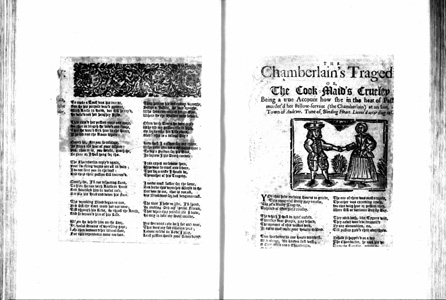
Figure 10: Bagford 2.52, verso and facing page, “The Chamberlain’s Tragedy.” By permission of the British Library. C.40.m.10
(larger image)
In archiving another ballad, “The Country Man’s Calendar,” Bagford also closely cropped and cut the ballad into two pieces. He then aligned the fragments along different orientations (though at least in the correct order), horizontally for the first section of the ballad and vertically for the second[19]:
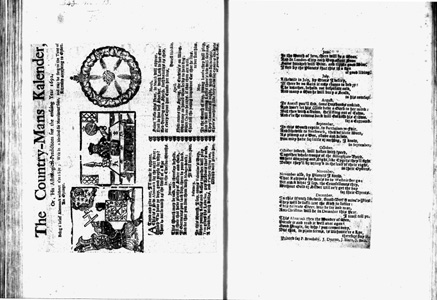
Figure 11: Bagford 2.56, “The Country-Mans Kalender.” By permission of the British Library. C.40.m.10
(larger image)
- In like spirit, one of the early contributors to the Roxbughe
Ballads, who was responsible for much of the content in the second of the four ballad
albums of the collection, not only eagerly cut up the ballads into pieces but
then rearranged them on a single album page, so that what would have been the
right half of a half-folio broadsheet appears instead below the left half of
the sheet, crammed vertically onto a single album page. Exemplary are the
ballads “All is Ours and Our Husbands” and “Amintor’s Lamentation” (each ballad
is cut into two pieces and then the second part is pasted below the first on a
single album page):
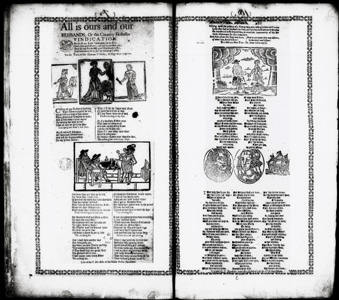
Figure 12: Rox 2.8-9, “All is ours and our Husbands” (left page) and “Amintor’s Lamentation” (right page). By permission of the British Library. C.20.f.8
(larger image)
With a zest for such imaginative re-assemblage, this same contributor to the Roxburghe collection (or at least it would seem to be the same contributor, given his trademark collage appliqué style) often pasted in some of the album page’s border ornament to mark his self-made divisions between fragments of the original ballad. This technique can be seen in the first of the two ballads below (the one on the left album page), titled “David and Bersheba”:
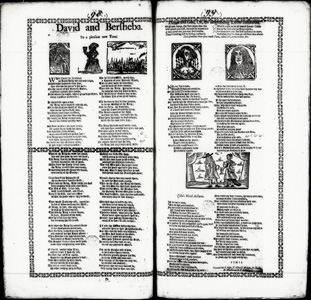
Figure 13: Rox 2.98-99, “David and Bersheba” (left page) and “Damon and Celia” (right page). By permission of the British Library. C.20.f.8
(larger image)
By thus transferring a fragment of ornament from one of the album pages to the division between two fragments of the ballad sheet about David and Bathsheba, this collector has recreated something of the ballad printers’ typical technique of using dividing lines of ornament to mark off sections of the ballad text (as evident in Figures 7 and 8). The collector has at the same time imaginatively (if rather ironically) imitated the practice whereby seventeenth-century ballad printers moved around fragments of ballads (whether text, song, or ornament) in his own re-collecting of the ballad.
- All of these various collectors may well have been driven by a desired whole vision, as was Pepys, but their collecting practices were characterized by haphazard and piecemeal assemblages, much like the practices we’ve seen evinced not only by the makers but also by the disseminators and partakers of ballads, broadsides, and pamphlets of their time (one might extend this discussion to include books, as would Johns, though to an admittedly less pronounced degree of disconnection). Such dismembering practices continued well into the twentieth century, but there is a noticeable trend beginning in the eighteenth century to preserve “whole” (albeit often trimmed) broadsides. Such attempts at “holistic” preservation of the broadside artifact can be seen, for instance, in the collections of broadside ballads made in the eighteenth century by Francis Douce and Richard Rawlinson, in the immense twenty-four volumes assembled in the nineteenth century by Frederick Madden (and even in the fourth volume added to the Roxburghe Ballads in the early nineteenth century by Benjamin Heywood Bright), as well as in the collection of ephemera, including broadside ballads, assembled in the twentieth century by John Johnson. Ironically, however, the new “holistic” treatment of the physical artifact of the broadside was accompanied by fragmentation of a different kind: a separation, at least in the minds of antiquarians, of the oral tune from the printed broadside (accompanied by the falling off of tune titles from most broadside ballads printed after 1700), and resultant debates over the value of oral versus print culture of the kind discussed in the forthcoming essays by Paula McDowell and Mary Ellen Brown.[20] But for the period that marked the heyday of the printed broadside ballad—the seventeenth century—such distinctions did not hold, even as that period embraced fragmentation in every facet of broadside ballads, including their printed tunes. Ballad collectors of the seventeenth century, in sum, followed the familiar contemporary practices of popular print and its reception: remembering through dismembering. Pepys was much more like his early modern contemporaries than he might at first seem (or acknowledge).
- So when we encounter a database like EEBO that aspires to collect the
entire repository of extant early modern printed materials and makes them
infinitely re-alignable, dis-assembleable and re-assembleable in multiple ways,
depending on how we search them and on how we define the search possibilities (extended
to extraordinary ends by the searchable transcriptions of EEBO-TCP), we are
working in something of an early modern mindset, not simply a modern or
postmodern one. Furthermore—and this brings me back to the first of the two
points I wanted to underscore about the intensified fragmentation that
characterizes the modern digital world view of early modern culture—when we embrace
the cyber spirit of multiplication and dispersal, we open up the possibility of
creating a more whole (if never singular) vision of the past precisely because
it offers us multiple fragmentary views.
- With advances in technology, the possibilities for multiplying our partial visions of the past are indeed great. The EMC’s English Broadside Ballad Archive, EBBA, for instance, is dedicated to digitizing all surviving early ballads printed in English, with priority given to black-letter broadsides printed in the broadside-ballad heyday of the seventeenth century. EBBA has to date mounted online all of the more than 1,800 broadside ballads collected by Samuel Pepys in his five albums; and it has done so not by observing a singular format but rather by offering multiple forms accessible in diverse ways <http://ebba.english.ucsb.edu>. Visitors to the website may get their bearings by reading background essays about ballad culture and about the categories by which Pepys attempted finally to order his ballads (not very successfully, I might add, as evidenced by Pepys’s “Promiscuous Supplement” tacked on to Volume 1 and his “Various Subjects, Mixt” that concludes volumes 4 and 5). In the advanced search, visitors might actually search by any one of Pepys’s categories as it repeats through all five volumes, thus producing a gathering of “hits” that duplicates something of the way Pepys holistically saw or would like to have seen his ballads assembled. At the same time (and in the same way that Pepys’s categories actually break down in the volumes), they might search the site by any keyword that comes to mind, such as “monster,” producing a more individualized gathering (if still a motley one, given the multiplicity of ways that this term could be applied to different creatures, actions, and people). So the database allows visitors to attain a “sense” of Pepys’s attempted holistic method of categorizing and gathering his ballads, even as it permits them to regather the ballads according to the kinds of words or phrases or keywords of individual interest, as any contemporary in Pepys’s own time might do.
- Similarly, though preserving the final organization and numbering system
of Pepys’s albums, the EBBA database—again true to the early modern
spirit—dismembers Pepys’s own acts of dismembering his ballads and restores
cut-apart or excessively trimmed ballads, reconstructing them as “whole”
facsimile broadsides and—for the convenience of the modern reader, for whom
black-letter or gothic print can be nearly unreadable, especially in the poor quality
print of broadsides—offers “facsimile transcriptions” which retain all the
ornament of the ballad but render the black-letter into easy-to-read roman
font. Finally—entering an entirely different medium—the archive offers song recordings of the ballads whenever the tune for the ballad can be found to be extant (the case for approximately 1,200 of the 1,800 ballads). In the end, then, visitors to the EMC’s English Broadside Ballad Archive can appreciate the multi-dimensionality of early modern broadside ballads—as art, as text (facsimile and transcribed), and as song—in ways hitherto impossible to achieve in traditional printed editions of the ballads. But that doesn’t mean that such visitors are accessing a “whole” vision of Pepys’s ballads any more than the early modern contemporary did. “Hits” remain haphazard, partial, and fragmentary—but multiply so. And that very multiplicity of fragmentariness makes the EBBA ballad site more not less true to the spirit of early modern popular print culture.
- Someone visiting EBBA might well choose to hear or see only one of the many possible, partial offerings of the database, but so too in the early modern period, a contemporary may only have heard a ballad being sung as they walked to market or church, or—especially likely for those unable to read the text of the ballad—they may have appreciated only the visual appeal of the ornate black-letter print together with the ornamental woodcuts, often pasted up as decoration on posts or on the walls of milk-barns, taverns, homes and like places, or they might have perceived of the ballad more as we moderns view the transcribed facsimile text—as a fully accessible aesthetic but also readable work. The possibilities of access or rememberings are infinite if also in any one instance or combination of “hits,” they are necessarily partial or fragmentary by virtue of that very fact. Only through multiple partial offerings can we approach a cultural whole, then and now.
- In making such intensely fragmentary and contingent visions available, in sum, modern databases such as the Early Modern Center’s EBBA or the immense archives of EEBO, ECCO, and EEBO-TCP, take the modern user closer not further away from the full early modern experience in all its multiple, integrated, and disassembled fragmentariness. They allow us to remember the early modern period as it encountered itself: by and through dismembering.
and1) The accelerated or intensive fragmentation of vision made available via large and variably searchable databases such as EEBO and ECCO actually allows us to create a more whole vision of the past than through traditional research precisely because it offers us multiple fragmentary “views,”
2) Such remembering via countless dis-memberings or fragmentations actually approximates the early modern period’s own access to its printed materials, which was never itself “whole.”To address my second point first, I will focus on a most obvious example: popular or perhaps more accurately, cheap print, such as pamphlets, broadsides, and ballads.

|

|
(larger image) |
(larger image) |
As of the time of this writing, an image for only the first ballad is included in EEBO (which raises a different kind of question about fragmentariness that I will not address here, other than to say that ballads are a seriously underrepresented corpus in EEBO and ECCO, an absence that UCSB’s Early Modern Center’s online ballad archive, EBBA, seeks to redress: http://ebba.english.ucsb.edu).
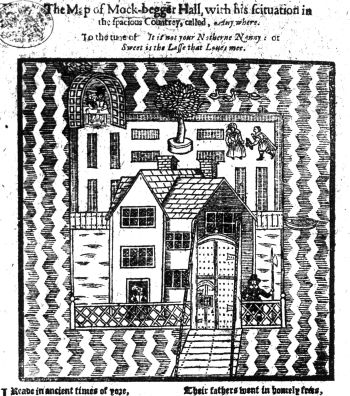
|
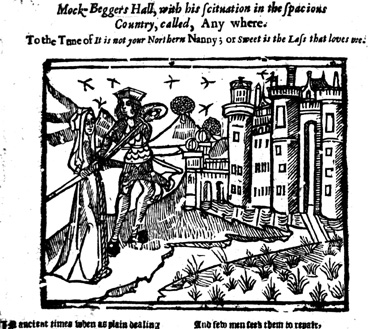
|
(larger image) |
|
The only constancy between the two ballads as seen in these close-ups is the tune, though not in the type in which the tune is printed (the first is mostly in roman, the second in roman italics), nor in the spelling, nor in the arrangement of the type by which the tune is announced, “It is not your Northerne [Northern] Nanny:[;] or Sweet is the Lasse [Lass] that Loues [loves] mee [me].” With less consistency, the title also repeats: the first title opens “The Map of Mock-begger Hall”; the second “Mock-Beggers Hall.” With even more variation, the text of the ballad also mutates from one printing to the next, as the two different first lines show: “I Reade in ancient times of yore” for the first, and “In ancient times when as plain dealing” for the second. But most striking and eye-catching is the difference in the woodcuts between the two ballads—indeed, no woodcut repeats from the one edition of the ballad to the next.
Figure 5: Imprint, Rox 1.252-253
Figure 6: Imprint, Rox 3.218-219
The first imprint, which the British Book Trade Index <http://www.bbti.bham.ac.uk/> dates as in use from 1634-37, reads “Printed at London for Richard Harper, neere to the Hospitall gate in Smithfield”[8]. The hospital here is St. Bartholomew’s. But by the second printing, not only the contingent pieces of the ballad, but Harper himself seems to have moved, or at least renamed his establishment. The second imprint, dated by the BBTI to 1639-40, declares “London, Printed for Richard Harper, at the Bible and Harp in Smithfield.”[9]
(larger image)
A contemporary who had viewed or bought “The Sailor and his Love” might well make a connection between it and the first “Mock Beggar Hall” ballad above, based on the reappearance in the latter of the woodcut on the far right of the two women, with their distinctive long bands of cloth (complained about in “Mock Beggar Hall”) and their feathered hats (this latter feature indicating a mannishness complained about in the anti-feminist debate pamphlets of the 1620s)[11]. Or perhaps the viewer of the first “Mock Beggar Hall” ballad might make a mental link instead to the ballad about the country lass, also now in the Pepys collection, and also sporting the second woodcut from the “Mock Beggar Hall” ballad, as seen below in Figure 8:
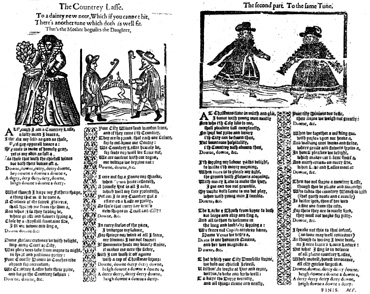
Figure 8: “The Countrey Lasse,” Pepys 1.268-269. By permission of the Pepys Library, Magdalene College, Cambridge
(larger image)
Since “The Country Lass” ballad praises the delights of the country over the city, association with “Mock Beggar Hall,” for anyone who actually heard or read the two ballads, might be especially strong.